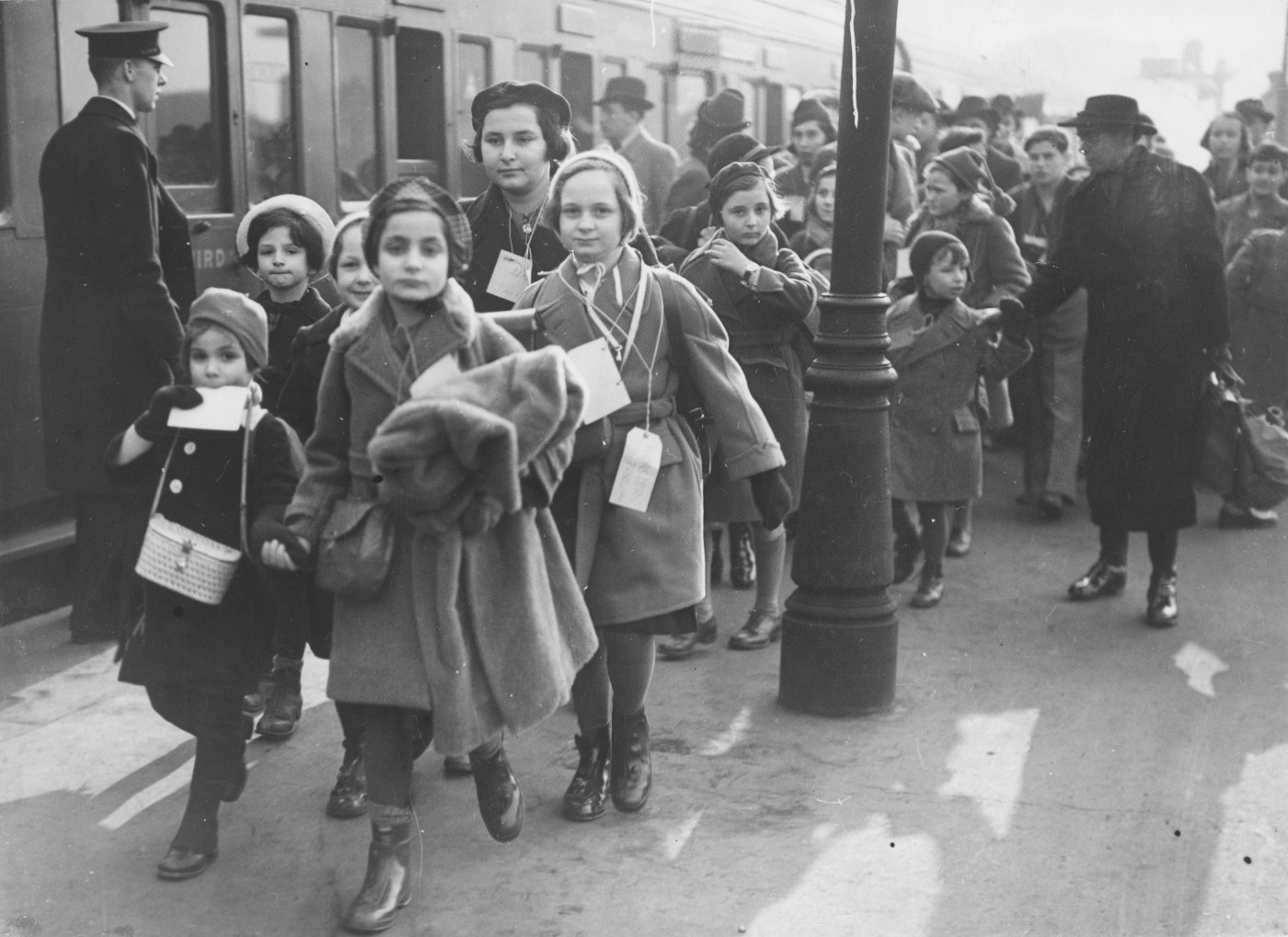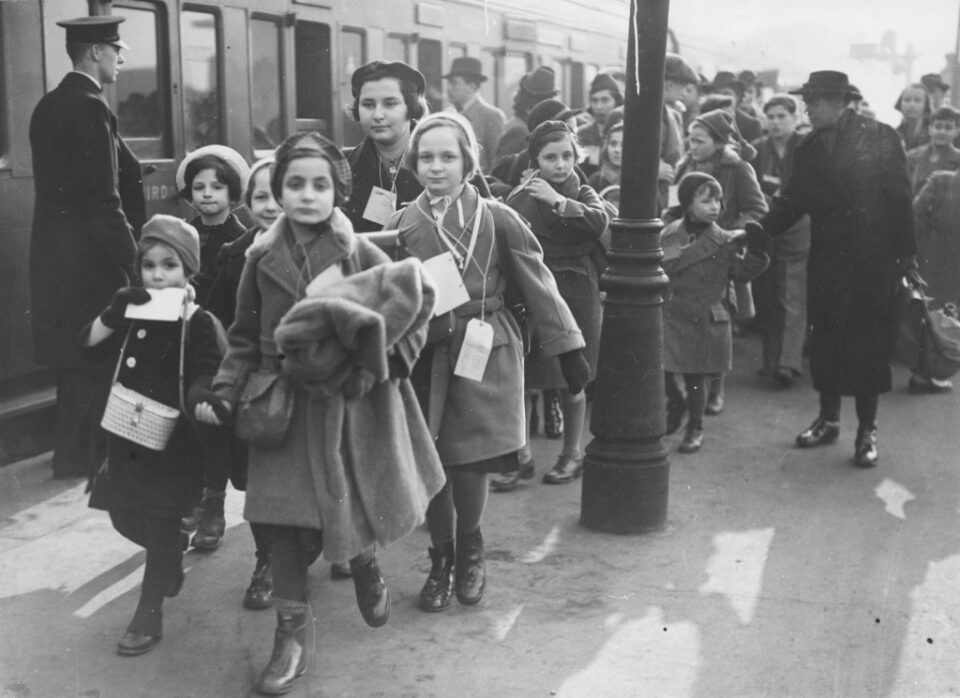
Thousands of unaccompanied children were sent from Nazi controlled areas of Europe to the United Kingdom from 1938-1940 to save their lives. Their story is told in “Kindertransport — Rescuing Children on the Brink of War,” an exhibition from May 19 to Nov. 17 at the Illinois Holocaust Museum.
Ilona Moradof is the curator of the exhibit and Associate Director of Administration and Special Projects at Yeshiva University Museum in New York, where the exhibition originated.
She will be at the museum on opening day as part of a panel, which includes Melissa Hacker, director of the documentary “My Knees Were Jumping: Remembering The Kindertransport;” Executive Director of the Kindertransport Association; and a second-generation descendant of Kindertransport survivor Ruth Morley (nee Birnholz).
The discussion will be moderated by Dr. Phyllis Lassner, Professor Emerita at the Crown Center for Jewish and Israel Studies at Northwestern University and a member of the Museum’s Exhibitions and Collections Committee.
Moradof said that the Yeshiva University Museum decided to create this exhibition because “there had never been a major exhibition on the topic in an American museum. We also have our own connection to the Kindertransport. Erica Jesselson, the founder of Yeshiva University Museum, and her sister Lucy Lang, who was a long-term board member, both came from Vienna on a Kindertransport to England.”
The exhibition is a partnership between Yeshiva University Museum and the Leo Baeck Institute — they’re both partners at the Center for Jewish History in New York.
The exhibition was first shown in 2018 at the Yeshiva University Museum and then moved to the Zekelman Holocaust Center in Farmington Hills, Michigan, followed by the American Swedish Institute in Minneapolis, before coming to the Illinois Holocaust Museum.
Moradof said the exhibition “provides very meaningful historical background for current events that are taking place around immigration, refugees, and separation of families.”
The exhibit includes recordings of people who were on the Kindertransport, as well as a confidential report that was published in 1939. “It includes statistics and information about the background of the children but also where they were living in England,” Moradof said.
Hacker was a consultant on the exhibition when it was first created. “It changes wherever it goes,” Hacker said, to include items related to the local community where it is being exhibited.
One significant item for Hacker is a small Jewish star on a gold chain that her mother had sewn into the lining of her coat before she went on the Kindertransport. “She was very lucky, her parents got out,” Hacker said, which was a rarity, but they couldn’t live together because they were penniless. Hacker noted that she is still in touch with the foster family who cared for her mother.
Hacker’s multigenerational organization, the Kindertransport Association, reunites kinder and the next generation, facilitates Holocaust education, and supports refugee children.
Hacker praised the Kindertransport Exhibition as “a really beautifully done exhibit that has a lot of original material. People of all ages can relate to it. The Kindertransport story is a way in to teaching the Holocaust to children.”
Dr. Phyllis Lassner is the author of a book on Kindertransport, “Anglo-Jewish Women Writing the Holocaust: Displaced Witnesses.” “I wrote this book in order to situate the literature that came out of the Kindertransport,” Lassner said.
She observed that the Kindertransport exhibition at the museum “is a way of looking at the effects of the Holocaust internationally. It’s an examination of Britain and its attitudes and policies toward the Jews. And it’s an American story.”
She noted that President Franklin Roosevelt could have signed an executive order to accept a Kindertransport, but he didn’t. “It went to Congress and the response of the American Congressmen was deplorable,” Lassner said. They would not accept a Kindertransport.
Close to 10,000 children were saved by the Kindertransport, Moradof said.
She concluded that the exhibition tells a bittersweet story, though. “The happy side is that these children could be saved,” she said. “But the sad story is that most never saw their parents again.”
The exhibit’s free opening event is at 2:30 p.m. May 19, preceded by a 2 p.m. reception. Admission is also free the last Monday of May and June. Get tickets at ilholocaustmuseum.org/free-day-ticketing/.
Myrna Petlicki is a freelance reporter for Pioneer Press.
Kindertransport — Rescuing Children on the Brink of War
When: May 19-Nov. 17
Where: Illinois Holocaust Museum, 9603 Woods Drive, Skokie
Tickets: $18; $12 seniors; $8 students; $6 ages 5-11
Information: 847-967-4800; ilholocaustmuseum.org/exhibitions/kindertransport-rescuing-children-on-the-brink-of-war
Myrna Petlicki , 2024-05-09 13:29:01
Source link


